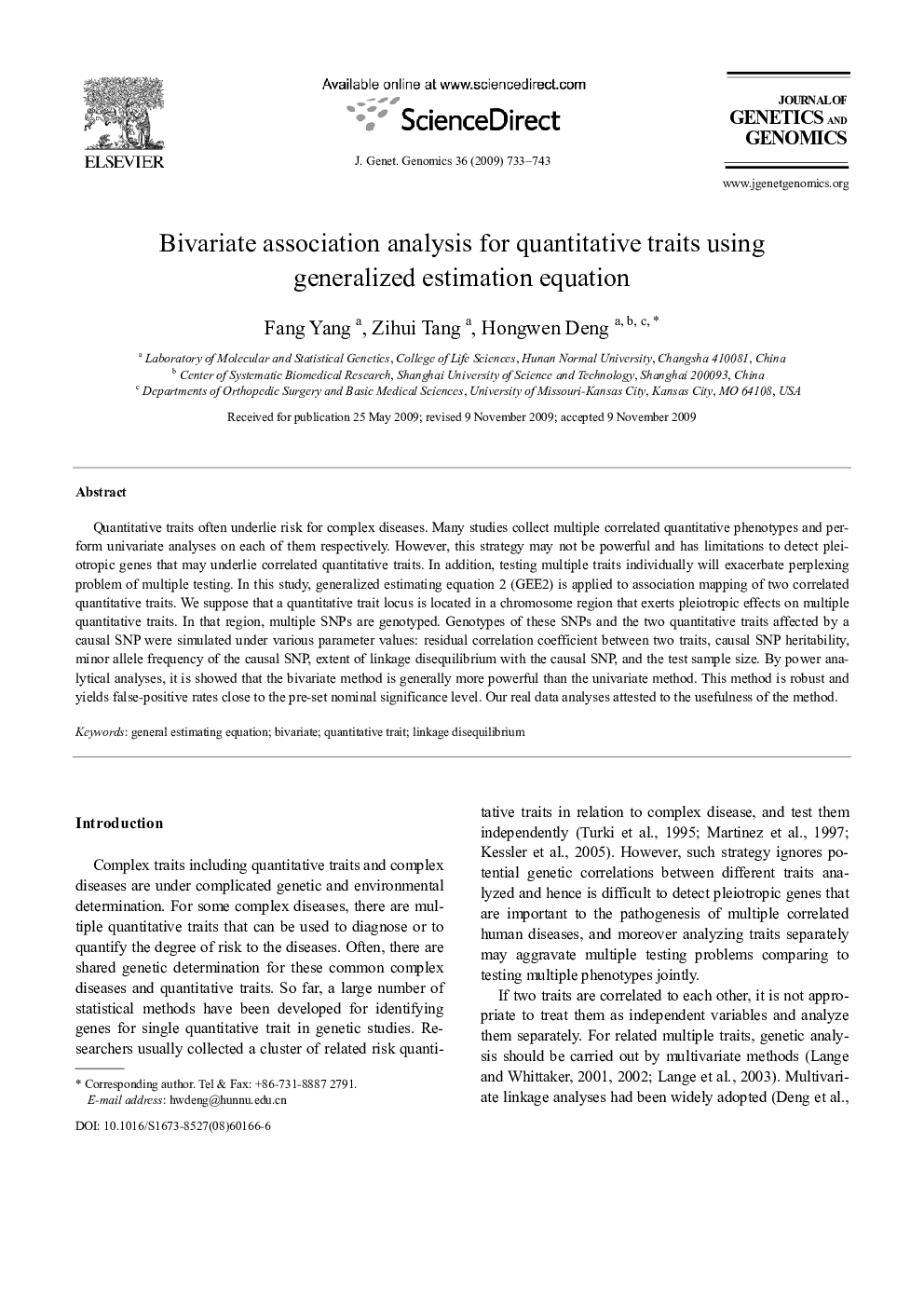| Article ID | Journal | Published Year | Pages | File Type |
|---|---|---|---|---|
| 2787662 | Journal of Genetics and Genomics | 2009 | 11 Pages |
Quantitative traits often underlie risk for complex diseases. Many studies collect multiple correlated quantitative phenotypes and perform univariate analyses on each of them respectively. However, this strategy may not be powerful and has limitations to detect pleiotropic genes that may underlie correlated quantitative traits. In addition, testing multiple traits individually will exacerbate perplexing problem of multiple testing. In this study, generalized estimating equation 2 (GEE2) is applied to association mapping of two correlated quantitative traits. We suppose that a quantitative trait locus is located in a chromosome region that exerts pleiotropic effects on multiple quantitative traits. In that region, multiple SNPs are genotyped. Genotypes of these SNPs and the two quantitative traits affected by a causal SNP were simulated under various parameter values: residual correlation coefficient between two traits, causal SNP heritability, minor allele frequency of the causal SNP, extent of linkage disequilibrium with the causal SNP, and the test sample size. By power analytical analyses, it is showed that the bivariate method is generally more powerful than the univariate method. This method is robust and yields false-positive rates close to the pre-set nominal significance level. Our real data analyses attested to the usefulness of the method.
